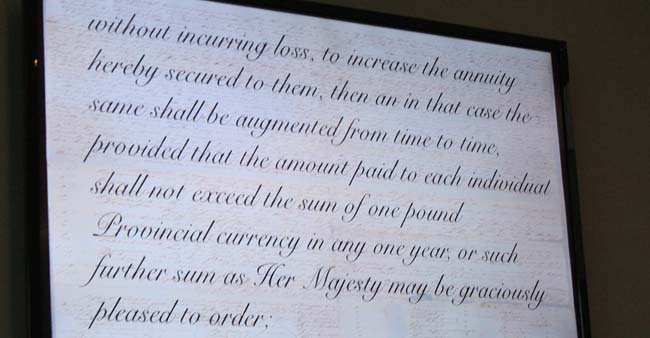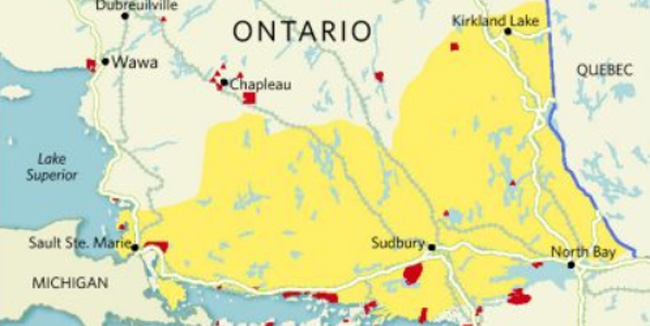Robinson Huron Treaty chiefs want to talk treaty with government

By Marci Becking
KETEGAUNSEEBEE ANISHINABEK – Chiefs from the Robinson Huron Treaty Territory have created an action plan that will change the way they talk with government.
Chief Wayne Pamajewon of Shawanaga First Nation says that he’s been pushing treaty for 40 years and the resolution the Robinson Huron Treaty Chiefs have passed this week to create a Robinson Huron Treaty Secretariat is a positive move forward.
“We need to make sure that when we talk to government, we talk treaty,” says Chief Pamajewon. “We have to decide what does treaty mean to our communities and when we put it together with all of the other Robinson Huron communities – we can say ‘this is what it means to us’.”
He says that public education and working with nearby reeves and mayors on First Nation traditional territory will bridge the gap when talking about environmental issues or economic development ventures.
“I have reached out to our local townships to let them know they are on traditional lands. They have to include us in any government discussions,” says Pamajewon.
Chief Ted Roque of Wahnapitae First Nation agrees that this is a positive change that is long overdue.
“We will now have an avenue to look after the whole treaty area so that nothing gets past us,” says Chief Roque. “Whether it is mining, forestry or another resource being taken from our treaty area, we need to know.”
Chief Lyle Sayers of Ketegaunseebee Anishinabek says that public education is important going forward.
“The more information we give to our own people and the general public about treaty, the better off we’ll all be,” says Chief Sayers. “We’re all Treaty people. We continue to use treaty to engage with the government on all different levels. The Robinson Huron Treaty is the only living document that ties the communities in the area together.”
On September 9, 2014, the Robinson Huron Chiefs filed an annuities claim to deal with past grievances regarding annuities with the Crown.
“The annuities claim has triggered and will trigger more discussions,” says Chief Pamajewon. “This will help us move forward with the education part as well.”
He says that because there are so many different treaties in Ontario that there is overlap and that the secretariat will have to be informed about what other treaty areas are thinking and incorporate that.
“We need to work together in the area of inter-treaty harvesting. A more formal process of recognizing and respecting one another’s territories for hunting and fishing is needed.”
The Robinson Huron Treaty Secretariat action plan includes the development of a Secretariat Steering Committee, a funding and resource strategy, governance framework and a communications strategy.
Chief Isadore Wiindawtegowinini Day from Serpent River First Nation who called the meeting says, “this historic move to establish the Robinson Huron Treaty Secretariat has the backing of the chiefs and is a sign that things are about to get real as far as new dialogue. Chiefs are asking for an action-oriented approach that is the manner in which we will bring our treaty forward into the 21st century.”



